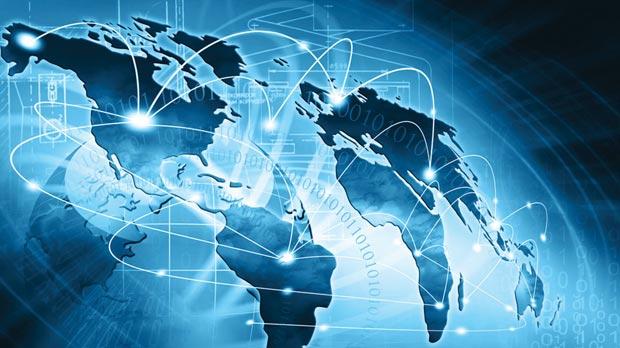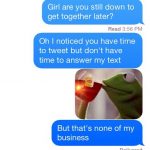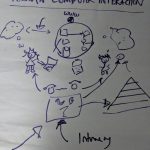When we think of culture, we often think of art galleries and museums, places where curators decide which works of art should be preserved and presented to future generations. Treasuring artefacts and storytelling has been a way of recording history since civilisation began. The cultural gatekeepers, who judge what cultural achievement is and which artefacts or stories should be preserved, have been until now few in number, which makes their choices political ones.
However, culture is much bigger than art and cultural achievement. Culture is learnt, not inherited and yet it influences our biology, our behaviour, our individuality. It is often used interchangeably with nation, race, ethnicity, identity and community, and so it is not surprising that in 1952, anthropologists, Kroeber and Kluckhohn compiled a list of 164 definitions of culture.
We talk about culture in politics, education and the work place, particularly how organisations have different management cultures such as Amazon’s bruising culture and, the idea of a global culture with global citizens.
Before 1989, the Internet belonged more or less to the culture of academia, until Tim Berners-Lee created a client-server information system called the World Wide Web and ran it over the Internet. Berners-Lee’s goal was to give universal access to a large universe of documents. He didn’t realise how the world would change and we would have another culture to consider: Digital Culture.
Digitisation and a cultural shift
Many arts and cultural organisations have turned to technology to help their archiving and preservation work, which in turn has led to a number of changes in these organisations and how they use technology.
They use technology to:
- Automate processes such as ticket sales and fundraising.
- Understand audience engagement with their exhibitions using data analysis.
- Promote and reach new audiences with social media.
Digitising works of art allows easy reproduction and distribution to an audience worldwide, whilst technology reduces the overheads of staffing, print materials, etc., so that organisations can lower costs. Digital installations accompany exhibits and augmented reality apps like Aurasma, add an extra dimension and experience to an exhibit.
Digitisation and access to the Internet has led to a shift in cultural gatekeeping and opened the door to normal people creating too. Anyone in the world can create and contribute. It is no longer a small world where only the select few can say what is good and worth treasuring. And the use of technology creates new types of digital art, to add to the culture of art.
Self-publishing is a perfect example of this approach. Writers no longer have to wait for the gatekeepers of publishing to condone their work and present it to an audience. Instead, anyone with access to the Internet can publish their work electronically and on paper for a price, cheap or otherwise, to attract an audience. They no longer need to wait for someone else’s established approval.
News media and television journalism have been instrumental in shaping our collective memory for much of the twentieth century but now, thanks to twitter and facebook, no longer. There are many others alongside the gatekeepers of the media who influence where we focus our attention. Anyone with access to the Internet and a story to tell access new platforms to reach people who were once only accessed by the media. Indeed, the media often curate tweets and other social media posts to record public opinion when there is breaking news.
The Internet compresses time and space so that the night shift is always covered because it is the day shift somewhere else in the world. Banks operate these hours. When one member of a team goes to bed in London, they know that someone in New York will be there well into the night, and once night falls in New York, there will be someone else working away in Hong Kong.
This flexible workforce and creation of intangible products such as databases, knowledge, or apps is known as a weightless economy or knowledge economy. Once something is made it can be reproduced and distributed at a low cost; infinitely.
Theoretically, this should ensure there is enough for everyone much more easily than it would be when sharing out physical goods and resources. Often though, the opposite is seen. This is because of the ‘superstar effect’. Consumers prefer to buy famous or branded knowledge goods e.g, ebooks, songs, movies or apps. So, because of the infinite, low cost distribution, the superstar or winning product can have an enormous market share, limited only by other competing superstar products.
Interestingly enough this economic inequality is tolerated better in the digital world than the real one, because everyone feels that they could create the next superstar product.
The addressable individual
Traditional marketing methods are dying out because of the many fragmented channels of social media and so content marketing is the new marketing and it is big business. The global sponsorship sales director at Manchester United describes fans on social media as addressable individuals with whom the club can have more intimate relationships [because with every interaction] we build up knowledge about who that fan is and what type of content they like to consume. With tailored content, the club encourages its 659 million worldwide fans to feel that special Man U connection by buying branded products endorsed by the club, and then share this feeling with the fans around them. If Man U gives something its stamp of approval then that creates value.
A common thread running through all definitions of social media is a blending of technology and social interaction for the co-creation of value. Rather like the shift in art culture, and everyone choosing what to treasure, we now have everyone creating content and sharing it across social relationships. But, even in this equal world, we have those more equal than others, with their influence and their ability to create content and also to make money – again they are tolerated more readily, because anyone has the chance to become the next great influencer or superstar.
Prosumers at playbor and weisure
As the role of consumer and end user disappears, the distinctions between producers and users of content fade. In many spaces online such as Wikipedia, users are also producers of the shared knowledge base, regardless of whether they are aware of their role. They are produsers or prosumers whocollapse the gap between producers and consumers.
Often prosumers don’t have well-defined jobs in the 20th century sense of the word. The Internet allows them to blur that boundary between play and labour or work and leisure so they are in the environment of playbor or weisure.
@Stampylongnose, is a man in his twenties, whose job is to play video games in his bedroom. He creates a video of himself playing Minecraft everyday and uploads it to YouTube, and he has great fun and earns lots of money. On YouTube, he is more popular than Justin Bieber and seems like a really nice man. My girls watch him a lot, probably more than they watch television. But to them, because they often watch YouTube on our television, or television on a tablet or phone, it is all one and the same. They are digital natives, and for them, there is no distinction between Stampy, a superstar on YouTube and Katy Perry, a superstar popstar who puts her song videos on YouTube.
Convergence or Splinternet
My kids see the world quite differently from me. So, it is no surprise that sometimes when I talk about my childhood, one in which the Internet (well WWW, didn’t exist), they ask me questions which seem mad to me, but perfectly normal in the context within which my girls live: Did you have music, mummy, when you were little? The existence of the Internet is as normal as the existence of music. Using your phone to watch TV, is normal too.
Designer and web standards advocate, @Zeldman, says that there are 18,796 distinct Android devices on the market, and this will only continue to increase as technology gets cheaper and more widely available. So, although you can do similar things on more devices, known as convergence, more and different devices mean that everyone is beginning to experience the Internet differently. This different experience worries some, who wonder if such diversity contributes to the Splinternet and thefear of the balkanisation of the Web.
However, until now, no country has built an intranet, disconnected from the rest of the world. Many countries have blocked websites like Netflix due to intellectual property regulations and social media during times of crisis, which goes against all the ideas of what the Internet stands for which is no central governing body, and universal access for everyone.
One variation of splintering is the filter bubbles people can live in. Rather than the long tail of choice and diversity, Google, since changing its search strategies, now serves up more of what you have already seen rather than more of what is out there and Facebook has personalised newsfeeds. So, people can become less exposed to viewpoints which are different from their own and live in their own personal bubble, reading only opinions with which they agree.
Digital culture: Utopia or Dystopia
Social Scientists like Sherry Turkle, once believed that the Internet could help her learn about herself. Others believed that it would radically change our culture. In some ways it has – we have the weightless economy, and more opportunities to create jobs in a weisure space. We can publish our works and our art and we don’t have to wait for anyone’s permission. But for many, their lives are still mediated by the TV and newspapers, who tell us where to put our focus, even online.
And, the main downside of equal access for everyone without a central governing body, is that as the Internet has been adopted by the majority of the population in advanced economies, all of the inclinations, prejudices, and habits of society came online too.
So in that virtual space where feminists can meet together and use social media to change sexist attitudes, we also have young women publishing erotic/sex confessional memoirs, pictures, videos and self-harm vlogs. Is this a disturbing trend or representative of young women today? In her book, Postfeminist Digital Cultures, Sociologist Amy Shields Dobson discusses young women and their behaviour on the Internet saying that culturally and traditionally we have always wanted our girls to be quiet, but if they dare to speak up, we don’t want them to be vulnerable. We want them instead to have what she calls a performative shamelessness. Shields Dobson goes on to say that it is too early to say and not enough data to decide what is disturbing or representative.
Similarly, with the Internet, we have a space free from social constructs which allow us to create different social structures. But in that space, there also exists groups of people who like patriarchy and hierarchy. We can have great discussions with like-minded people and find our tribe, but we also have trolling and bad behaviour far worse than what would happen in face-to-face discussion.
Without the Internet, you might never know that your lovely sweet old-lady neighbour is capable of saying the most awful things, in her second identity as a hateful tweeting Internet troll. She is a great example of the post-structuralism (brilliantly explained in the link using hipsters) – a theory of the individual as an unstable entity in this digital world within which we now live. But without the Internet you might not have met those inspirational people either.
Individuals change, and digital culture, like culture itself, is constantly growing and changing, whilst everyone is renegotiating the rules of how it works. The Internet reflects all of this, which to quote the Eagles’s Hotel California: … could be heaven or this could be hell.
Thankfully, there is enough digital space to make it what we want.





